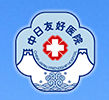OBJECTIVETo observe the morphological changes in enteric nerve system (ENS) of rats with multiple organ dysfunction syndrome (MODS) treated by Dachengqi Decoction (, DCQD).METHODSFifty Wistar rats were randomly assigned to the control group, MODS model group and DCQD treated group. The rats in MODS model group and DCQD treated group were injected Escherichia coli (E. coli) suspension into abdominal cavity under sterile condition. The DCQD treated group was gavaged with DCQD 2 days before the E. coli suspension was injected. Twenty-four hours after injection, the proximal segment of intestine was resected and studied by immunohistofluorescence using vesicular acetylcholine transporter, vasoactive intestinal polypeptide (VIP), substance P (SP) and neuronal nitric oxide synthase (nNOS) antibodies. The whole-mount preparations were observed by laser scanning confocal microscope to detect the changes of quantity and fluorescence integral optical density (IOD) value of intestine enteric nerves.RESULTSCompared with the control group, the quantity and IOD value of acetylcholine (ACh), VIP, SP and nitric oxide (NO) nerves of intestine in the MODS group were significantly decreased (P<0.01), and the network of enteric nerves was remarkably disrupted. Compared with the MODS group, the quantity and fluorescence IOD value of ACh, VIP, SP and NO nerves in the DCQD group were significantly increased (P<0.01), and the network of enteric nerves was remarkably recovered.CONCLUSIONDCQD can protect and repair damage in the network of ACh, SP, NO and VIP nerves in rats with MODS, which may be one of mechanisms involved in promoting gastrointestinal motility by DCQD.









